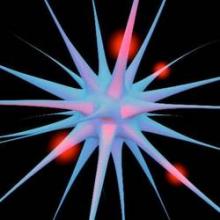Less than half of YouTube videos that provide information about peripheral neuropathy discuss evidence-based treatment options, and only half are from health care professionals, according to a cross-sectional, systematic review of 200 videos on the website.
“Caution should be exercised when YouTube videos are used as a source of information for the treatment of neuropathy,” first author Dr. Harsh V. Gupta of the department of neurology at the University of Arkansas, Little Rock, said in a written statement.
He and his colleagues searched YouTube during Sept. 19-21, 2014, for the terms neuropathy, peripheral neuropathy, diabetic neuropathy, neuropathy causes, and neuropathy treatment. Of the more than 2,000 videos found in the search results, they analyzed the first 200 that were less than 10 minutes in duration, available on the first 10 pages of search results, and in the English language (Muscle Nerve. 2015 Oct 21. doi: 10.1002/mus.24916).
The videos most often featured health care professionals (51%), followed by patients (26%), and others (23%). Overall, 92 videos discussed treatment of neuropathy, which also was the only predictor of a favorable response (number of “likes”) or increased viewership. A total of 27 discussed more than one treatment modality. Health care professionals accounted for 41 of the videos discussing treatment, with most (18) from chiropractors and 7 from physicians (only 1 from a neurologist).
The treatment discussions most often cited alternative medicine (37%), devices (26%), or pharmacologic treatments (16%). “Despite having AAN [American Academy of Neurology] practice parameters for neuropathic pain management, only approximately 30% of treatment discussion in our cohort (43 of 145) mentioned the use of antidepressants, anticonvulsants, or percutaneous electrical nerve stimulation, which have level A or B evidence for efficacy,” the investigators noted.
While most videos (161) discussed symptoms of neuropathy, only 89 discussed causes, 16 discussed complications, 15 discussed types, and 9 discussed diagnostic investigations. Although more videos from health care professionals discussed diagnostic investigations or the complications of neuropathy, the differences were not statistically significant.
The study had no outside funding.


